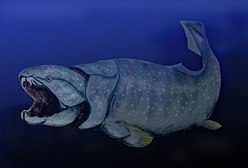Patagotitan vs Mammals Scale Diagram SVG Steveoc86
- • Patagotitan is one of the largest sauropod dinosaurs known from relatively complete remains.[1] Mounted skeletons are on display at American Museum of Natural History and The Field Museum of Natural History. Patagotitan silhouette based on a reconstruction by Henrique Paes, used with permission.[2]
- • Palaeoloxodon recki silhouette redrawn from Appendix 1 T in Larramendi 2016. Palaeoloxodon, along with Stegodon and Mammuthus, were among some of the largest land mammals. One fragmentary individual of Palaeoloxodon namadicus, known from a partial femur (Sagauni II), possibly belongs to the largest land mammal currently known. However, the exact size estimation has some uncertainty and has not been shown here.[3]
- • Paraceratherium silhouette redrawn from Appendix 1 AG in Larramendi 2016. The largest individuals are known from fragmentary remains (i.e. AMNH 26168/75) and there is some uncertainty as to the estimated body size.[3]
- • Polar Bear silhouette has been primarily redrawn from a personal photo taken in Copenhagen Zoo. One male specimen was reported as 2.85 m long with a shoulder height of 1.7 m.[4]
- • Giraffe silhouette has been primarily redrawn from a photo by user GTBacchus.[5] with modifications to make it look like a male. Scaled to be ~5.88 m tall, the reported height of the tallest giraffe, measured 'between pegs' (i.e. stretched out). Taller heights have been claimed, but these are not as credible or unauthenticated.[6][7] Note: The giraffe illustrated here is scaled to be 5.88 m when posed with the neck fully vertical with the head extended. However, due to some uncertainty, there could be some slop in the scale here.
- • Elephant silhouette primarily redrawn from a photo by Ian Sewell.[8] The silhouette is scaled to have a shoulder height of ~3.2 m, the average height for adult male elephants. Adult females are smaller on average, being around ~2.6 m tall at the shoulder. The reported shoulder height of the largest accurately measured male elephant is over 4 m when laid out on the ground, estimated to be ~3.96 m when standing. Such large individuals are, however, extremely rare.[3]
- • Rhino silhouette is primarily redrawn from a photo by user Ikiwaner.[9] Scaled to have a shoulder height of ~1.86 m.[10]
- • Humans scaled to 170 cm (5 ft 7 in) and 160 cm (5 ft 3 in) respectively.
References
- ↑ José L. Carballido; Diego Pol; Alejandro Otero; Ignacio A. Cerda; Leonardo Salgado ; Alberto C. Garrido ; Jahandar Ramezani ; Néstor R. Cúneo ; Javier M. Krause (2017). "A new giant titanosaur sheds light on body mass evolution among sauropod dinosaurs". Proceedings of the Royal Society B: Biological Sciences. 284 (1860): 20171219. doi:10.1098/rspb.2017.1219.
- ↑ Henrique, Paes. Patagotitan mayorum skeletal reconstruction. DeviantArt. Retrieved on February 16, 2020.
- ↑ a b c Larramendi A. (2016). "Shoulder height, body mass and shape of proboscideans". Acta Palaeontologica Polonica 61. DOI:10.4202/app.00136.2014.
- ↑ Feldhamer, G.A., Tompson B.C., Chapman J.A (2003). Wild Mammals of North America: Biology, Management, and Conservation The Johns Hopkins University Press, Baltimore, USA and London, UK.
- ↑ User:GTBacchus. [[[:File:GiraffeRunning.jpg]] Giraffe in Nairobi National Park, Kenya]. https://commons.wikimedia.org.
- ↑ Carwardine, M. (2008). [1] Pages 19 The Natural History Museum, Animal Records', Sterling Publishing Company, UK.
- ↑ Dagg, A.I. and J. B. Foster (1976/1982): The Giraffe. Its Biology, Behavior, and Ecology. Krieger Publishing Company, Malabar, Florida (Reprint 1982 with updated supplementary material.)
- ↑ Ian Sewell. [[[:File:Moremi_elephant.jpg]] Elephant crossing the road in Moremi Wildlife Reserve, Botswana.]. https://commons.wikimedia.org.
- ↑ User:Ikiwaner. [[[:File:Waterberg_Nashorn3.jpg]] Laufendes Breitmaulnashorn in Namibia]. https://commons.wikimedia.org.
- ↑ Macdonald, D. (2001) The New Encyclopedia of Mammals, Oxford University Press, Oxford ISBN: 0198508239.
Relevantní obrázky
Relevantní články
MegafaunaMegafauna označuje v zoologii velké nebo obrovské živočichy v dané lokalitě, na stanovišti či během určité geologické periody, kteří již mohou, ale nemusí být vyhynulí. Nejběžnějším kritériem k zařazení druhu k megafauně je minimální hmotnost 46 kilogramů, nebo minimální hmotnost jedné tuny. Podle prvního přístupu je do megafauny řazena řada druhů, které nejsou běžně považovány za příliš velké, ale které jsou jedinými velkými zvířaty vyskytujícími se v určité oblasti. V tomto případě se k megafauně řadí napřiklad jelenec běloocasý, gazela Thomsonova či klokan rudý. V praxi se v akademické i populárněnaučné literatuře používá pojem megafauna pro suchozemské savce větší než člověk, pokud se nejedná pouze o domestikovaný druh. .. pokračovat ve čtení









